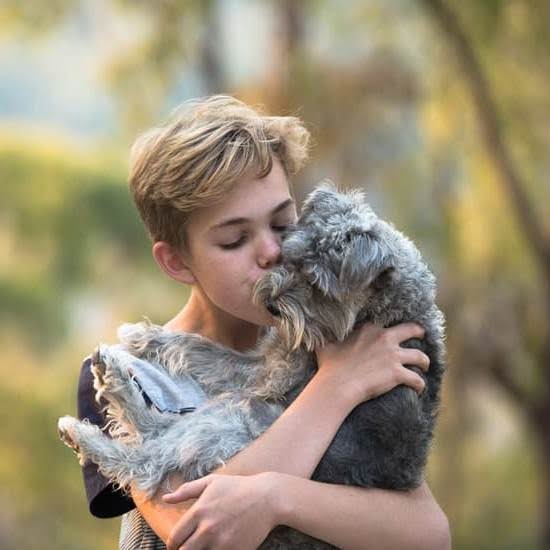Training a dog to stop on a whistle can be a valuable skill that enhances obedience and safety for both the pet and its owner. In this article, we will explore the importance of this training and how it can benefit you and your furry companion.
Additionally, we will provide step-by-step guidance on how to effectively train your dog to stop on whistle, including selecting the right whistle, teaching the command, using positive reinforcement, practicing in different environments, and addressing common challenges.
When it comes to training a dog, using a whistle as a tool for commands offers several advantages over verbal cues. Whistles produce consistent sounds that are easily distinguishable from background noise, making them more reliable and effective in various environments. This makes them ideal for training dogs to stop, especially when off-leash or at a distance.
Choosing the right whistle is crucial for successful training. Different types of whistles are available, each with its own unique pitch and range. When selecting a whistle for your dog’s breed and size, it’s important to consider factors such as frequency levels and ease of use. Once you have chosen the appropriate whistle, the next step is to introduce it to your dog and establish its association with the stop command.
Understanding the Whistle
When it comes to training a dog to stop on whistle, many people may wonder why a whistle is an effective tool for this purpose. The truth is that using a whistle for training can have several advantages over verbal commands. Understanding these advantages can help dog owners appreciate the effectiveness of using a whistle in their training efforts.
Some of the reasons why a whistle is an effective tool for training a dog to stop include:
- Consistency: Whistles produce a consistent sound each time it is blown, unlike the variations that can occur in verbal commands depending on tone and volume.
- Distance: A whistle’s sound can travel further than your voice, making it an ideal tool for training in outdoor spaces or from a distance.
- Clarity: Whistle sounds are distinct and often less muddled than voice commands, making them easier for dogs to understand and respond to.
In addition to these benefits, whistles also have the advantage of being a neutral sound that is not affected by the owner’s emotions or energy levels. This neutrality can prevent confusion and ensure that the dog responds consistently to the command regardless of the owner’s state of mind.
Moreover, many dogs are highly responsive to auditory cues, making whistles an excellent tool for catching your pet’s attention and communicating with them effectively in various environments. These advantages make using a whistle an appealing option for teaching your dog to stop on command.
Choosing the Right Whistle
When it comes to training a dog to stop on whistle, choosing the right whistle is crucial for success. There are several different types of whistles available, each with its own advantages and disadvantages. Here are some key considerations when exploring different types of whistles and how to select the best one for your dog’s breed and size:
- Frequency: Some whistles produce a single, constant tone, while others have adjustable frequencies. It’s important to consider which frequency will be most effective for your dog’s hearing capability.
- Materiel: Whistles can be made from various materials such as metal, plastic, or even wood. The material can impact the durability and sound quality of the whistle.
- Size: The size of the whistle should be appropriate for your dog’s breed and size. Smaller breeds may require a smaller whistle that produces a higher-pitched sound, while larger breeds may benefit from a larger whistle with a lower frequency.
Once you have considered these factors, it’s essential to choose a whistle that is comfortable for you to use consistently. Some whistles come with adjustable features, allowing you to customize the sound based on your dog’s response during training sessions.
Ultimately, the goal is to select a high-quality whistle that produces a clear and consistent sound that can effectively capture your dog’s attention in various environments. By carefully evaluating your options and considering your dog’s specific needs, you can find the perfect whistle to aid in training them to stop on command.
Teaching the Dog to Recognize the Whistle
Teaching a dog to recognize the whistle and associate it with the command to stop is a crucial step in training for obedience and safety. To begin this process, it is important to first familiarize your dog with the sound of the whistle. Start by allowing them to listen to the whistle from a distance, gradually moving closer as they become more comfortable with the sound. This will help prevent any potential fear or aversion to the whistle.
Once your dog is familiar with the sound of the whistle, you can begin associating it with the command to stop. Begin by blowing the whistle just before giving the verbal command “stop.” Repeat this process consistently, ensuring that you blow the whistle every time you give the verbal command. This will help your dog understand that the sound of the whistle signifies that they should come to a halt.
It’s important to keep training sessions short but frequent in order to keep your dog engaged and avoid overwhelming them. Be patient and provide positive reinforcement each time your dog responds correctly. This can include treats, praise, or other rewards that your dog finds motivating. With consistent practice and reinforcement, your dog will begin to understand and respond reliably to the whistle command.
| Training Tip | Description |
|---|---|
| Familiarize with Sound | Allowing your dog to listen to the whistle from a distance before getting closer. |
| Associating Whistle with Command | Blowing the whistle just before giving the verbal command “stop.” |
| Short Training Sessions | Keeping sessions brief but frequent for better engagement and learning. |
Positive Reinforcement
Training a dog to stop on whistle requires consistent positive reinforcement to ensure that they understand and comply with the command. Positive reinforcement is the key to successful training, as it encourages the desired behavior and strengthens the bond between you and your dog. When your dog responds to the whistle, it’s important to reward them with treats and praise to reinforce their good behavior.
Using Treats Effectively
When using treats as a reward for stopping on the whistle, it’s crucial to choose high-value rewards that your dog finds especially enticing. This could be small pieces of chicken, cheese, or any other treat that your dog loves.
It’s also important to have a variety of treats on hand so that your dog doesn’t become bored or disinterested during training sessions. Additionally, be sure to use small portions of treats to avoid overfeeding and keep your dog motivated throughout the training process.
Utilizing Praise
In addition to using treats, praise is also an essential part of positive reinforcement when training your dog to stop on whistle. Dogs thrive on verbal praise and respond positively to a happy tone of voice. When your dog stops in response to the whistle, be sure to offer enthusiastic verbal praise such as “good boy” or “good girl”.
You can also incorporate physical affection such as petting or belly rubs as another form of praise that reinforces their good behavior. Consistent use of both treats and praise will help solidify the connection between the whistle command and stopping behavior in your dog’s mind.
By effectively using treats and praise as part of positive reinforcement, you can ensure that your dog not only understands but also eagerly responds to the whistle command. These rewards create a positive association with stopping on command, making it more likely that your dog will reliably stop when they hear the whistle in various environments and situations.
Practicing the Command
When training your dog to stop on a whistle, it’s important to practice the command in various environments and around different distractions. Practicing in different settings will help solidify the behavior and ensure that your dog responds reliably, no matter the circumstances. One key environment for practicing the stop command is at the park, where there are plenty of distractions such as other dogs, people, and various scents to investigate.
Start by practicing the stop command in a familiar environment, such as your backyard or a quiet area of the park with minimal distractions. Once your dog is consistently responding to the whistle in these settings, gradually increase the level of distraction. This can be achieved by introducing other dogs or people into the training area, or by visiting busier areas of the park where there is more activity.
Another way to practice the stop command is by enlisting the help of a friend or family member with a well-behaved dog. Arrange for controlled interactions between your dog and theirs while working on the obedience training. This will mimic real-life scenarios where you may need to call your dog away from interacting with unfamiliar dogs in public spaces.
Remember that consistency is key when practicing the command in different environments. Always use positive reinforcement and reward your dog when they obey the whistle, even if there are distractions present. Gradually increasing both environmental complexity and distraction levels will result in a well-trained dog who reliably stops on command, regardless of their surroundings.
| Environment | Tips |
|---|---|
| Park | Gradually increase distraction levels while practicing. |
| Interacting with other dogs | Enlist help from trusted friends or family members and their well-behaved dogs. |
Correcting Mistakes
Identifying the Issue
When your dog doesn’t respond to the whistle command, it’s crucial to stay calm and try to identify the root of the problem. Is your dog distracted by something in the environment? Are they unsure about what is expected of them? By understanding the cause of their lack of response, you can address it effectively and adjust your training approach as needed.
Reinforcing the Command
If your dog consistently fails to respond to the whistle, it may be necessary to reinforce their understanding of the command. This can be done through additional training sessions focused specifically on the stop command. Consider going back to basics and practicing in a controlled environment with minimal distractions before gradually increasing the level of difficulty.
Troubleshooting Common Challenges
Some dogs may struggle to understand or follow the whistle command due to various reasons such as fear, confusion, or lack of proper conditioning. In such cases, patience is key. It’s essential to avoid scolding or punishing your dog for not responding as this can create negative associations with the whistle and impede progress. Instead, take a step back and reassess your training methods, making adjustments that cater to your dog’s specific needs.
By addressing these challenges with patience and understanding, you can help your dog overcome any obstacles that may be hindering their ability to respond to the whistle command effectively. Remember that every dog is different, so tailoring your approach to suit their individual temperament and learning style is crucial for successful training outcome.
Maintenance and Consistency
In conclusion, training your dog to stop on a whistle is not only a valuable skill for obedience and safety but also a bonding experience between you and your pet. The use of a whistle provides a clear, consistent signal that can be easily recognized by your dog, making it an effective tool for training.
By choosing the right whistle for your dog’s breed and size, introducing it gradually, and using positive reinforcement, you can successfully teach your dog to respond reliably to the stop command.
Once your dog has learned to stop on the whistle, it is important to maintain consistency in training and reinforcement. This means practicing the command in different environments and with various distractions to ensure that your dog can respond reliably in any situation. Over time, ongoing practice will help to reinforce the behavior and prevent it from becoming inconsistent or forgotten.
By staying dedicated to continuous training and reinforcement, you can ensure that your dog reliably stops on command. Remember to be patient and consistent in your approach, as every dog learns at their own pace. With time, patience, and plenty of positive reinforcement, you will have a well-trained companion who responds promptly when you blow the whistle.
Frequently Asked Questions
How Do You Train a Dog to Stop Barking With a Whistle?
Training a dog to stop barking using a whistle involves associating the sound of the whistle with a command for silence. This can be done by blowing the whistle and then immediately giving the command “quiet” or “stop” while showing a treat as a reward for complying with the command.
Consistency and patience are key in this training process, as it may take time for the dog to make the connection between the whistle sound and the command.
Do Dog Whistles Make Dogs Stop?
Dog whistles can be effective in getting dogs to stop certain behaviors, including barking. The high-frequency sound produced by a dog whistle is not necessarily unpleasant or painful for dogs, but it can capture their attention and interrupt their current behavior.
Over time and with consistent training, dogs can learn to associate the sound of the whistle with specific commands or cues, leading them to stop barking when they hear it.
Is Whistle Training Good for Dogs?
Whistle training can be beneficial for dogs when used in conjunction with positive reinforcement and consistent training techniques. It provides an additional tool for communicating with your dog at a distance or in situations where verbal commands may not be effective.
When introduced and used correctly, whistles can help improve obedience, recall, and overall communication between dogs and their owners. As with any form of training, it’s important to use positive methods and avoid using whistles as punishment or intimidation.

Welcome to the blog! I am a professional dog trainer and have been working with dogs for many years. In this blog, I will be discussing various topics related to dog training, including tips, tricks, and advice. I hope you find this information helpful and informative. Thanks for reading!





